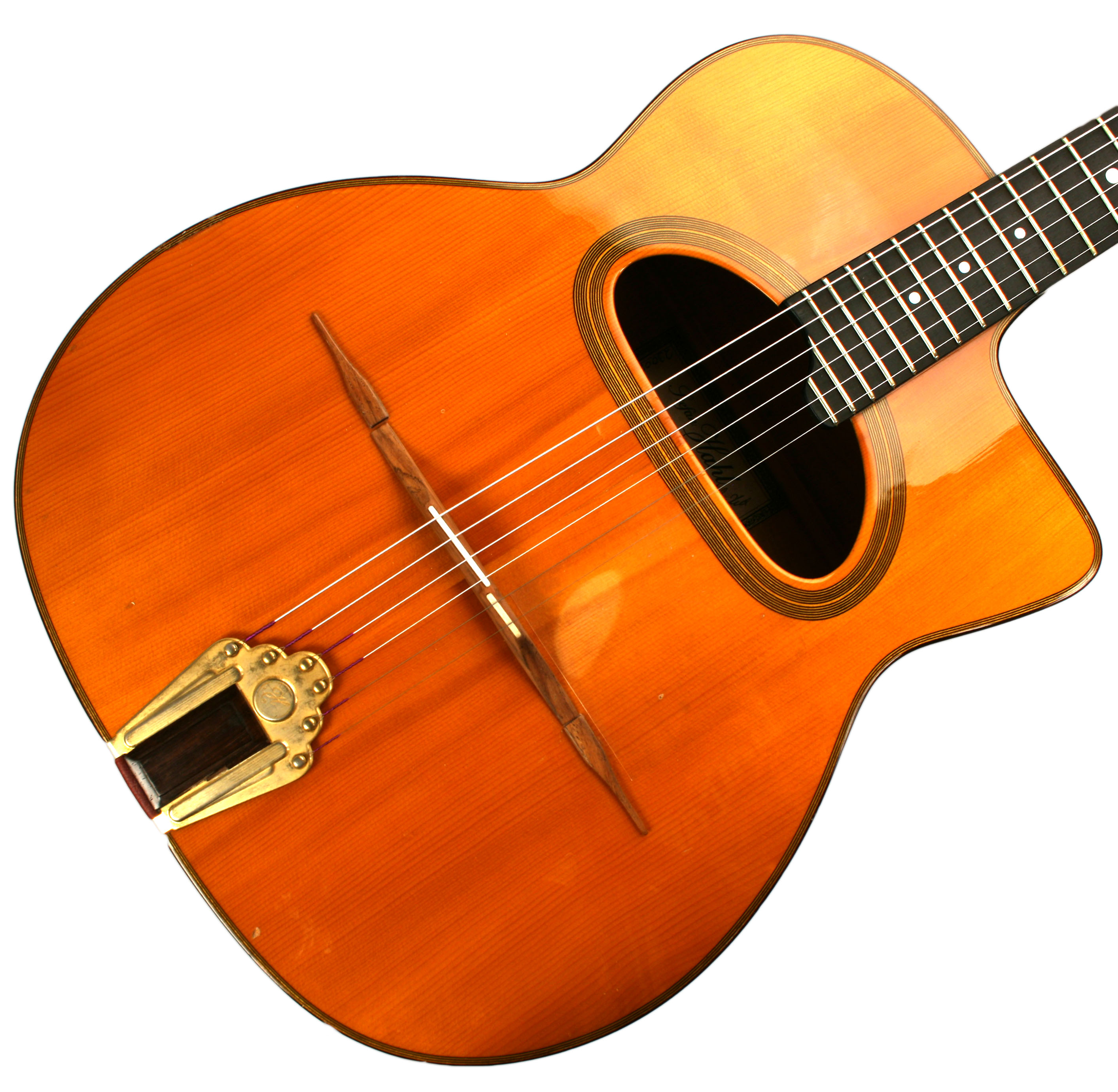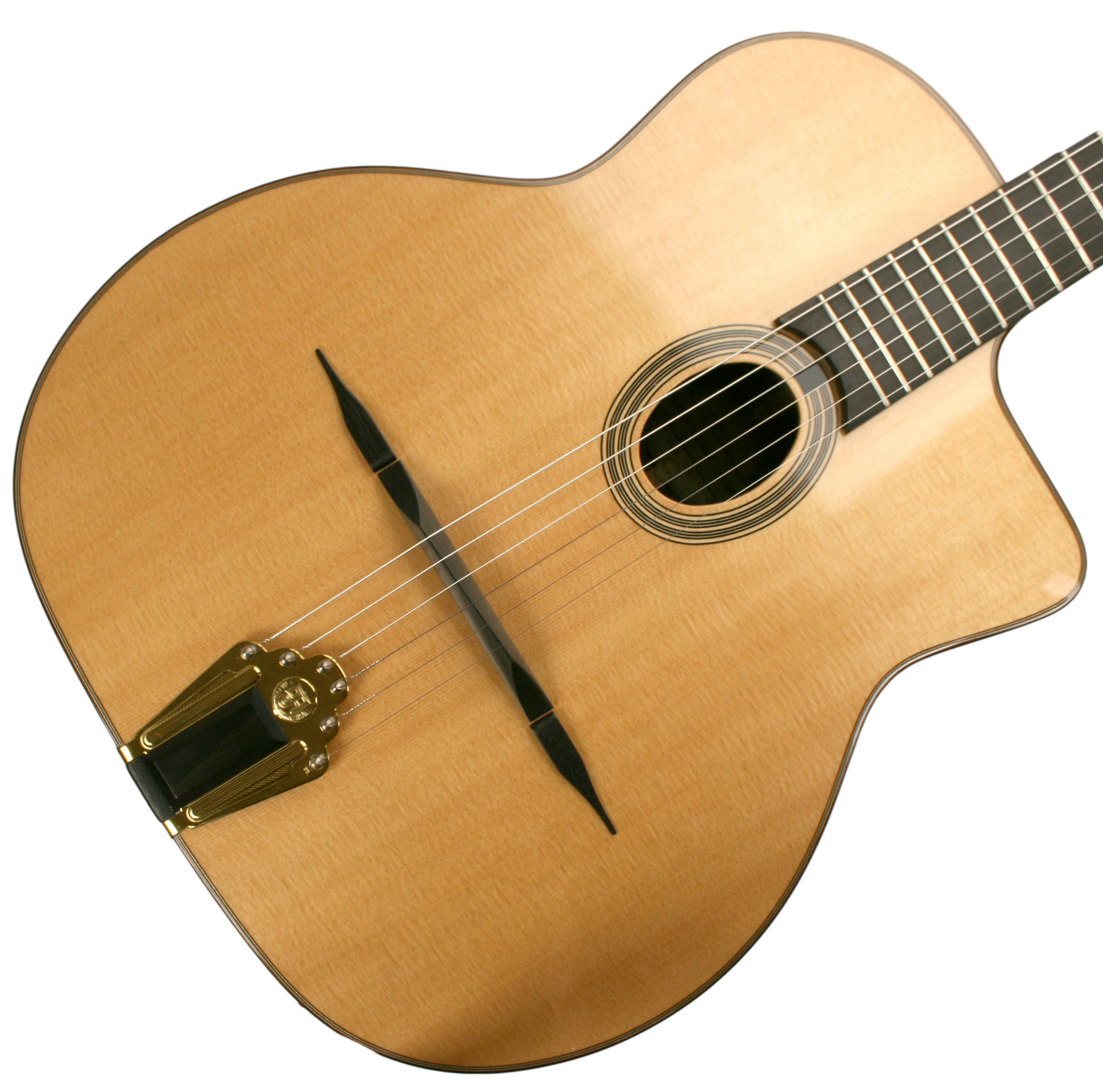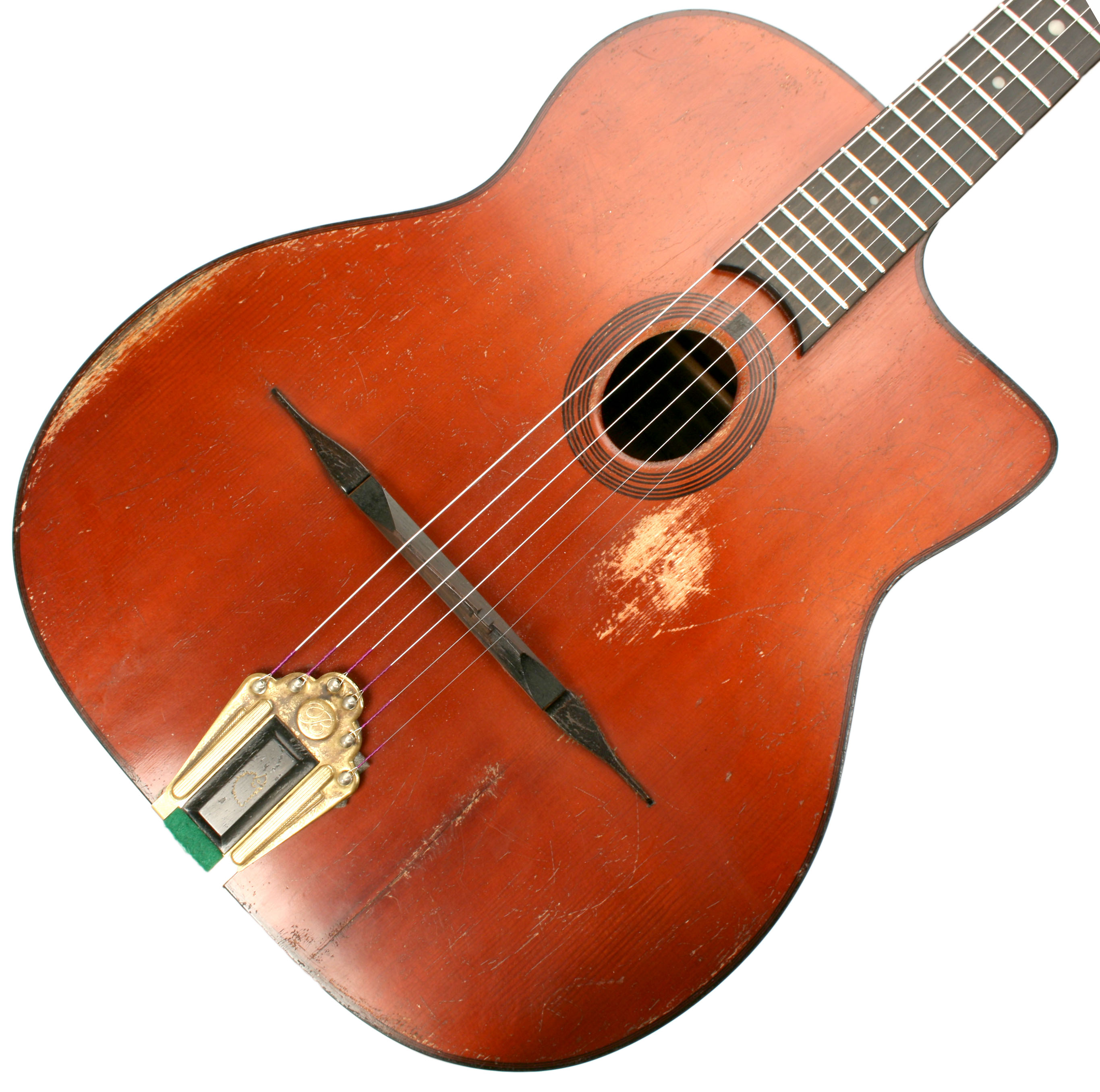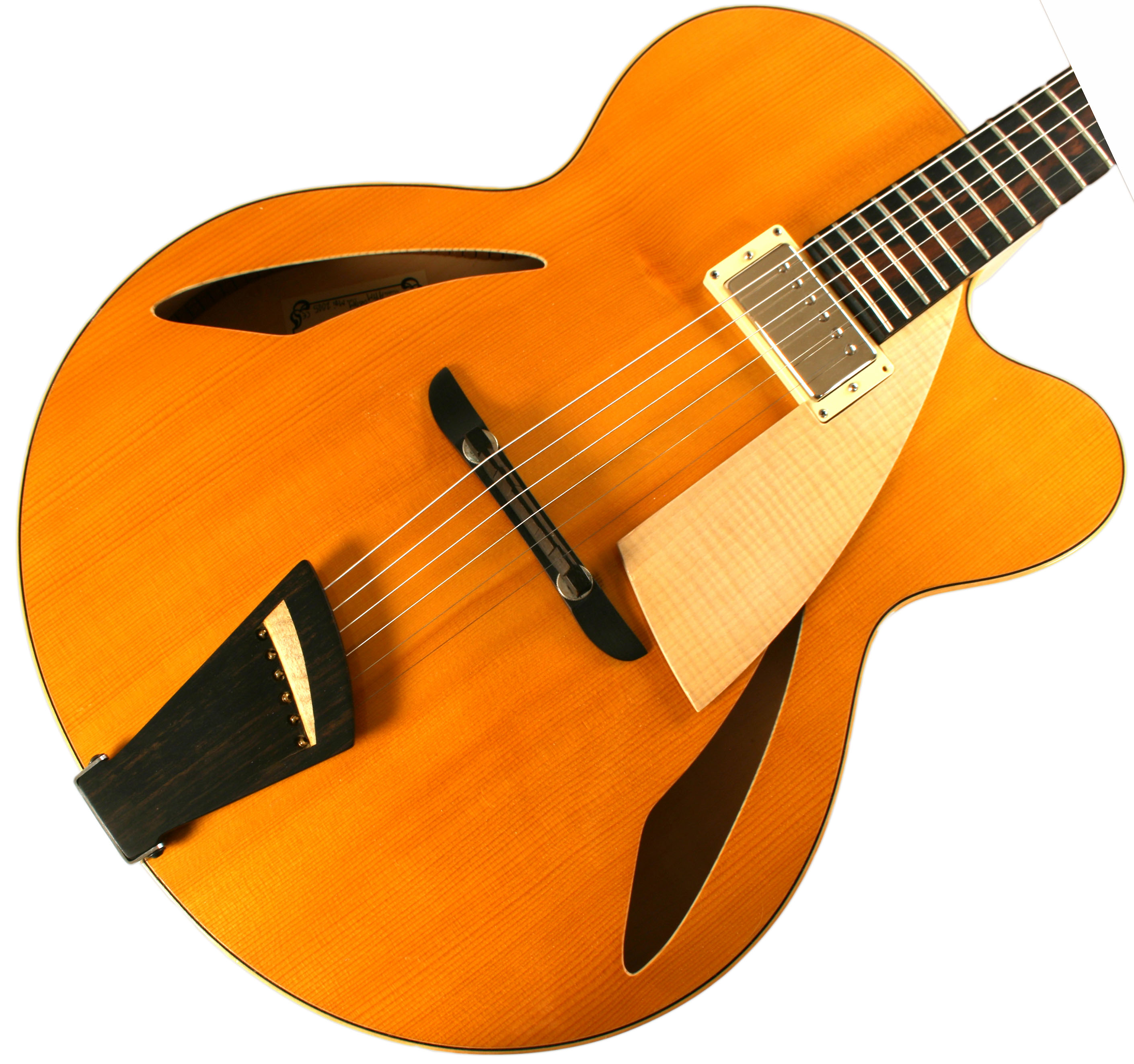Posted by Michael Horowitz on September 13, 2024 at 3:23 pm in News.Comment on this post.

2002 Hahl De Luxe Gitano
The ultimate modern Gypsy guitar, handmade by Germany's best!
Posted by Michael Horowitz on September 11, 2024 at 2:47 pm in Guitars.Comment on this post.

2012 Park Montmartre
Favino style model from Canada's premiere Gypsy luthier!
Posted by Michael Horowitz on September 11, 2024 at 2:14 pm in Guitars.Comment on this post.

2022 Jean Barault Vintage Relic
Beautifully distressed model has the look, feel, and sound of the Gypsy guitars of yore!
Posted by Michael Horowitz on September 11, 2024 at 12:00 pm in Guitars.Comment on this post.

2005 Dupont ATTM 17 Custom
Top quality modern archtop with a stunning flamed maple body!
Posted by Michael Horowitz on September 10, 2024 at 11:47 am in Guitars.Comment on this post.